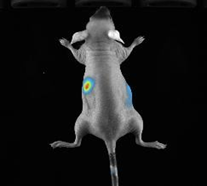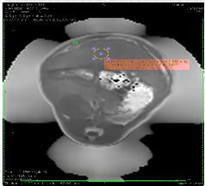Animal facility
The Animal Facility at CEINGE – Advanced Biotechnology Franco Salvatore is designed in compliance with current national and European regulations (Legislative Decree 26/2014, Directive 2010/63/EU), with the aim of ensuring optimal housing conditions and proper use of animal models, while safeguarding their health and welfare and promoting good scientific practice. The facility, classified as an optimized conventional category, covers a total area of 539 m² and is designed for the breeding and experimental use of mice (Mus musculus). The cages are equipped with individually ventilated systems (IVC), which ensure consistent maintenance of ideal microclimatic parameters and effective isolation between individual animal groups.The Animal Facility includes dedicated areas for quarantine, colony housing, the use of genetically modified microorganisms (GMMs) of group 2, behavioral studies, and microsurgical procedures. An additional area of the facility is entirely reserved for preclinical imaging activities and is equipped with advanced technologies including ultrasound systems, optical imaging devices, PET/CT, and high-field magnetic resonance imaging (9.4T), enabling high-resolution, non-invasive morpho-functional investigations. All activities carried out within the facility are certified as compliant with ISO 9001:2015 and ISO 45001:2018 standards, with certification issued by Certiquality for the current three-year period.
EQUIPMENT
- IVIS SPECTRUM-PerkinElmer
- ETHOVISION XT-Noldus Technology
- BIO SPEC 94/20-Bruker
- FMT 2000-PerkinElmer
- Vevo F2 LAZR-X20-VisualSonics
- SUPERARGUS PET/CT-SEDECAL
- NEWTON 7.0FT 500-Vilber
SERVICES
- Housing;
- Colony management;
- Gavage;
- Blood sampling;
- Organ sampling;
- Organ perfusion;
- Stereotactic surgery;
- Wound healing assay;
- Ultrasound;
- Positron emission tomography/computed tomography (PET/CT);
- 2D and 3D fluorescence and bioluminescence tomography;
- Photoacoustic imaging;
- High-field magnetic resonance imaging.
The CEINGE Animal Facility provides comprehensive support for developing protocols for performing experimental procedures on mouse models and drafting research projects, which are then evaluated by the local animal welfare authority.
RESEARCH AREAS

Oncological imaging using bioluminescence and fluorescence: Study of neoplasms through advanced imaging methods, using fluorescent and bioluminescent markers for in vivo visualization of tumor progression and therapeutic efficacy.

Ultrasound and photoacoustic imaging: Application of high-resolution ultrasound and photoacoustic imaging for non-invasive analysis of organs and tissues in mouse models, with particular focus on the development of cardiovascular, hepatic, and tumor pathologies.

Resonance imaging: Use of high-field nuclear magnetic resonance for the detailed study of organ morphology and function, with particular reference to the central nervous system and the cardiovascular and musculoskeletal systems.

PET/CT imaging: Use of positron emission tomography for the characterization of radiopharmaceuticals to be used in new therapeutic applications, for the measurement of cellular and molecular processes in animal models, as well as for the early diagnosis of disease in relation to the onset of molecular and cellular alterations.

Behavioral studies: Analysis of behavioral responses in mouse models for the evaluation of neurological, psychiatric, and neurodegenerative disorders, through specific tests for anxiety, depression, memory, learning, and social interaction.
ANIMAL FACILITY REGULATION
The animal enclosure at CEINGE-Biotecnologie Avanzate Franco Salvatore is a limited access structure controlled by a magnetic strip card reader. Authorization for the access of a researcher or a technician is issued by the animal welfare manager, following a request from the contact person of one of the laboratories related to the enclosure. Access to the enclosure and related services will be granted only to personnel with adequate training, in accordance with art. 23, paragraph 2 of Legislative Decree. 26/2014 and, however, included in the research projects authorized by the Ministry of Health on the basis of art. 31 of the current legislation. Therefore, before starting to attend the enclosure, each operator must learn the correct entry, behavior and work procedures designed to reduce the risk of contamination and to safeguard the welfare of the rats. Access to researchers responsible for carrying out controls or experimental procedures is permitted in strict compliance with entry rules. Any visitors or researchers of other organizations will be able to access only if accompanied by already practical staff of the procedures.
MANAGEMENT OF RESEARCH PROJECTS EMPLOYING ANIMALS TO SCIENTIFIC PURPOSE
1. Each project manager must send the project in question to the members of the body responsible for animal welfare (OPBA) (by completing all the required forms in Italian), no later than 7 days before the date of the official meetings at the following address: obaceinge@pec.ceinge.unina.it
2. Once the documents reviewed by the proposing manager have been received, the OPBA expresses a motivated opinion about the research project and any subsequent modifications as well, informing the project manager (Article 26, d);
3. The OPBA submits to the Ministry of Health the applications for authorization of the research project referred to in articles 31 and 33 of the current legislation, still informing the person in charge of the project;
4. It is forbidden to carry out research projects involving the use of animals without approval by the Ministry.

